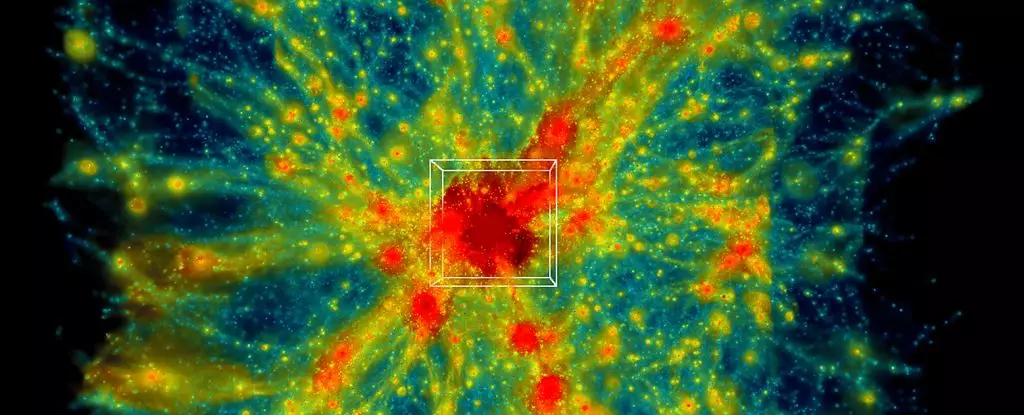In an era marked by immense technological advancements, astrophysicists continue to explore the universe’s profound enigmas. At the forefront of this research is the striking project known as ExaSky, conducted at Oak Ridge National Laboratory (ORNL) in the United States. In November 2024, the supercomputer Frontier executed an innovative astrophysical simulation, unmatched in its scale and detail, representing an extraordinary leap in our understanding of cosmic evolution. This ambitious project converges complex astrophysical concepts, algorithms, and cutting-edge computing technologies to yield insightful revelations about the Universe, including its perplexing dark matter.
The core elements dissected in ExaSky’s simulation are critical to grasping the universe’s architecture: dark matter and conventional matter. Dark matter, which appears to engage solely through gravitational interactions, remains one of the most elusive constituents of our cosmos. In tandem with it is conventional atomic matter, the matter we observe daily. Leading physicist Salman Habib of Argonne National Laboratory elucidates the challenge that scientists face in accurately simulating these multifaceted components along with various cosmic phenomena such as star formation, galaxy evolution, and the behaviors of black holes. The endeavor can be likened to constructing an intricate puzzle without having a clear image of the final product. The concept of cosmological hydrodynamics simulations emerges as a pivotal methodology in creating a more cohesive picture of the universe’s scale and processes.
The Mechanics of Cosmic Simulation
As we study the expanses of space and time, we access the cosmic timeline’s various complexities—from the formation of galaxies to the evolution of fundamental structures. However, one of the overarching issues in cosmic research is the sheer timescale involved; significant cosmic changes take billions of years, a daunting challenge when trying to visualize or understand the universe’s entire history. This is where advanced simulations become indispensable, as they allow researchers to manipulate time to grasp the dynamic shifts inherent in cosmic evolution. The underlying mathematics involved is sophisticated, transforming vast and intricate datasets into more digestible information.
Despite the potential, creating meaningful and efficient simulations remains a formidable challenge. Historically, simplicity was often favored, with essential variables omitted in favor of computational efficiency. As Habib highlights, earlier models relied on approximations that could only assess gravitational interactions, leaving out the intricate details necessary for comprehensive astrophysical study.
A Quantum Leap in Simulation Capability
The ExaSky project marks a significant milestone achieved through countless hours of fine-tuning algorithms and improving both software and hardware capabilities. The combination of advanced technology available in the Frontier supercomputer empowered researchers to dramatically enhance the scale of their simulations. This computational marvel—previously recognized as the fastest supercomputer in the world—allowed scientists to push the boundaries of what’s possible in simulating the Universe’s expansion.
Crucially, the ExaSky simulation encompasses a staggering volume of space, which represents merely a fraction of the broader cosmos—0.001 percent, to be precise. The implications of such a vast simulation are enormous, providing a potential foundation for understanding dark matter’s role in cosmic structure and evolution.
As the team at ORNL sifts through ExaSky’s extensive data, they anticipate unveiling mind-bending findings that will reshape our comprehension of the Universe. Bronson Messer, an astrophysicist associated with this groundbreaking study, echoes this sentiment, highlighting the connection between modern observational astronomy and the capacity to engage with data on such an unprecedented scale.
Ultimately, ExaSky emerges not only as a technological and scientific triumph but also as a beacon of hope for astrophysicists and cosmologists alike. By pushing the boundaries of computation and simulation, we embark on a journey that promises to illuminate the hidden depths of our Universe’s history, exposing new chapters in the perpetual quest for understanding the cosmos. As exploration enters this new age of discovery, we can only anticipate the formidable answers that lie ahead.


Leave a Reply